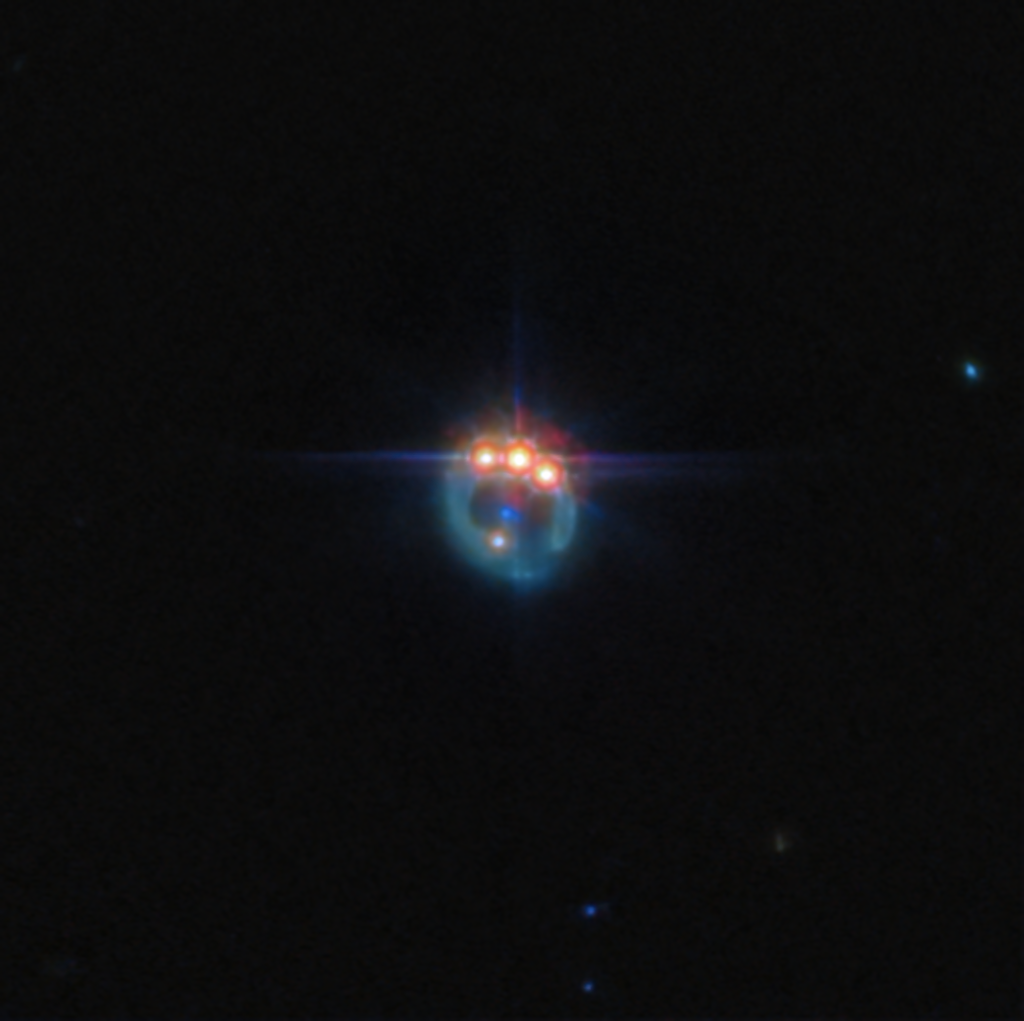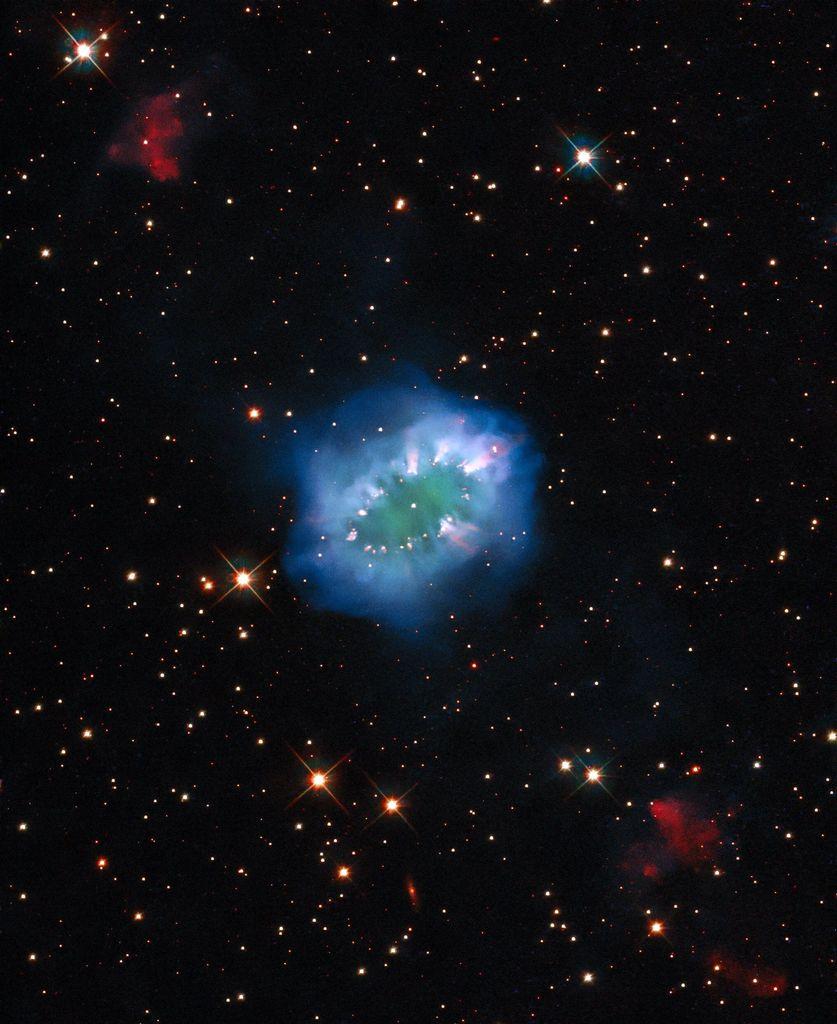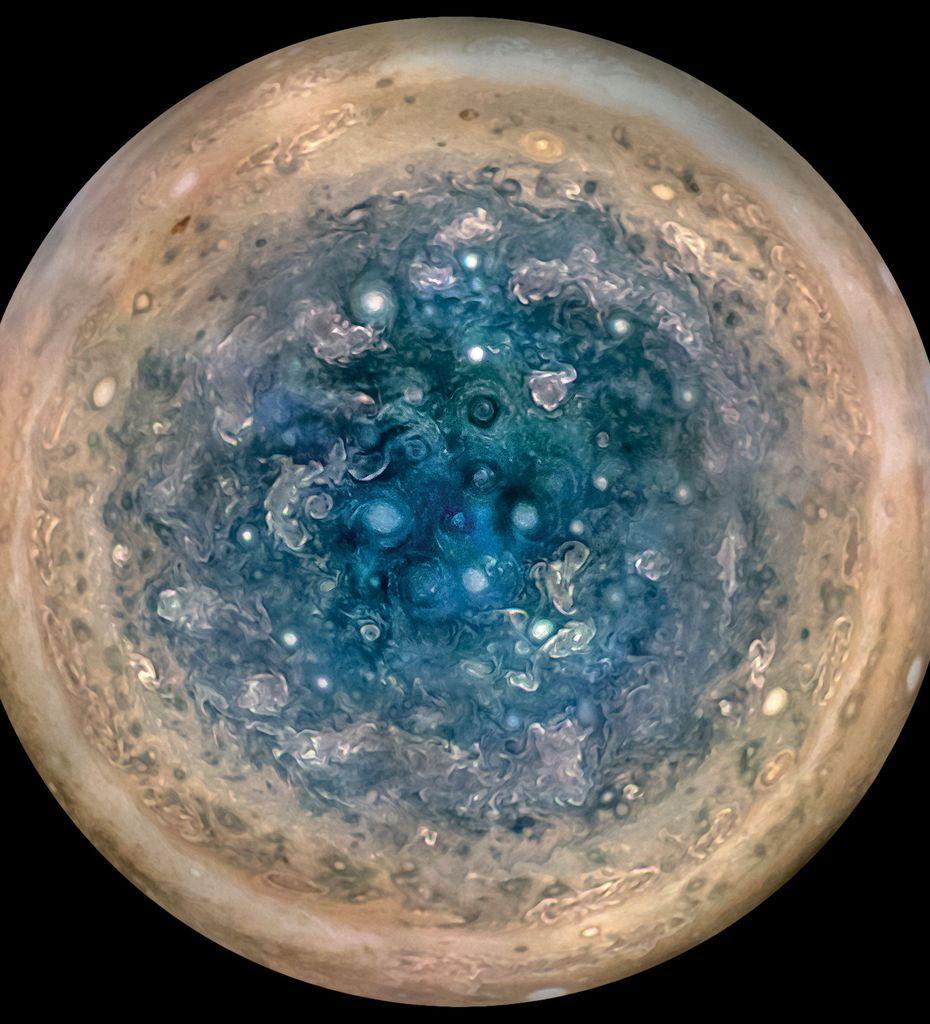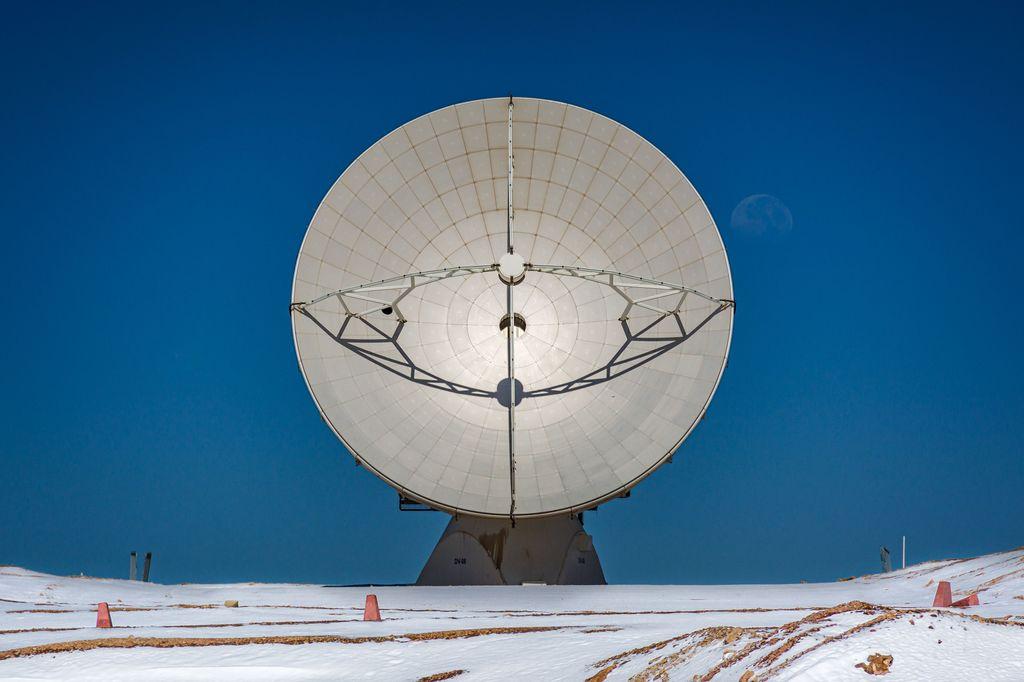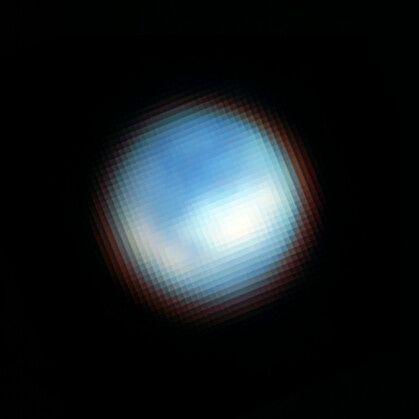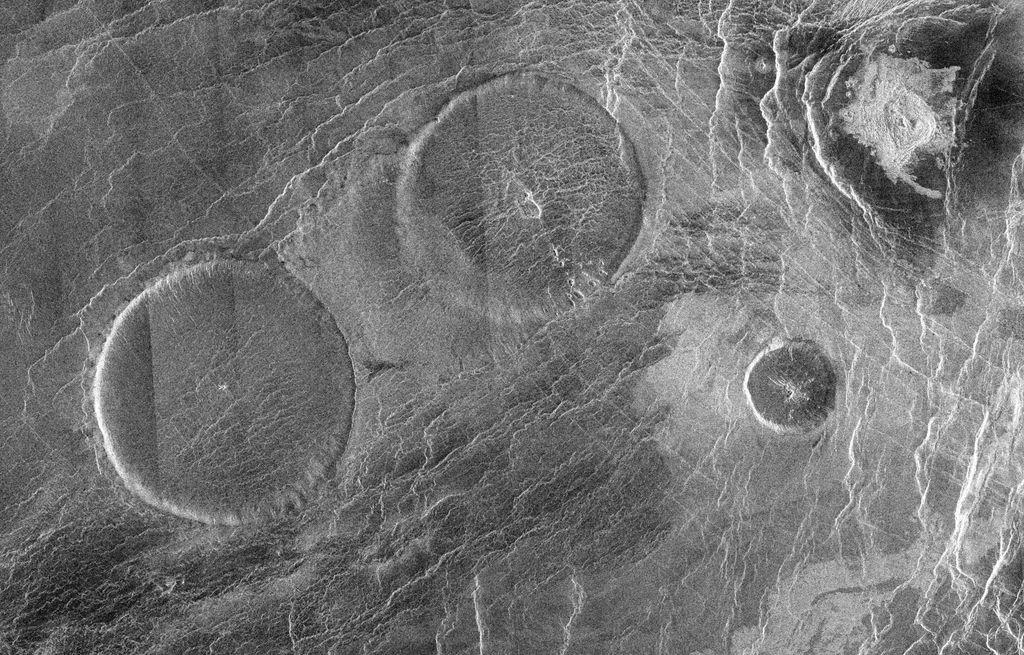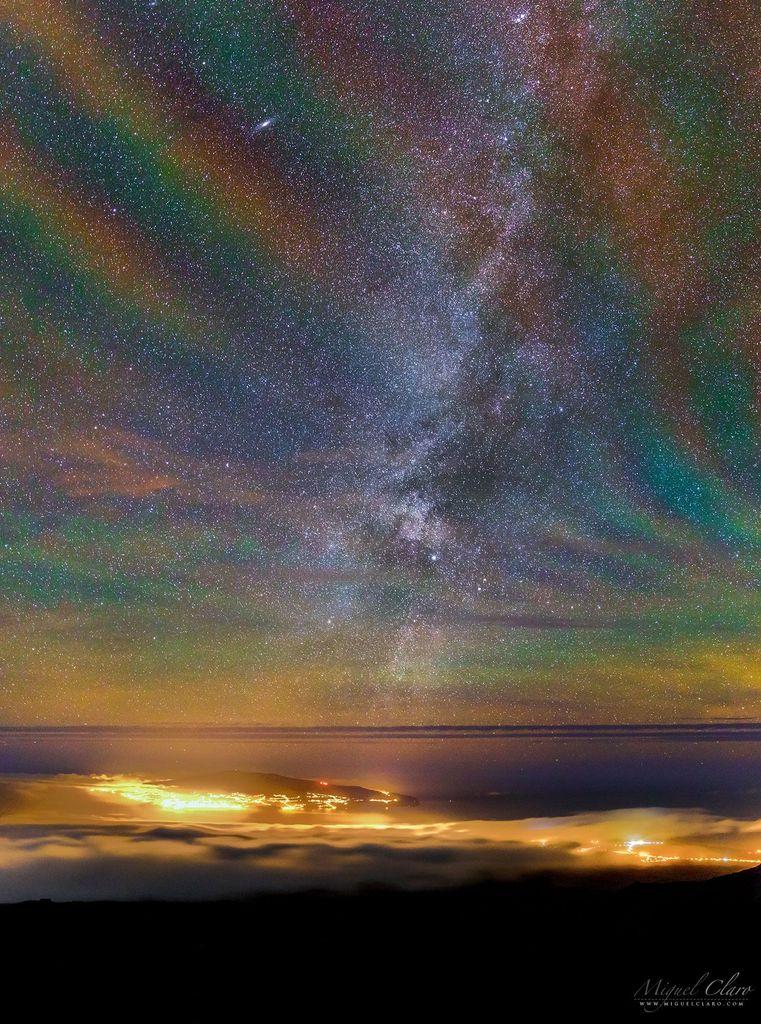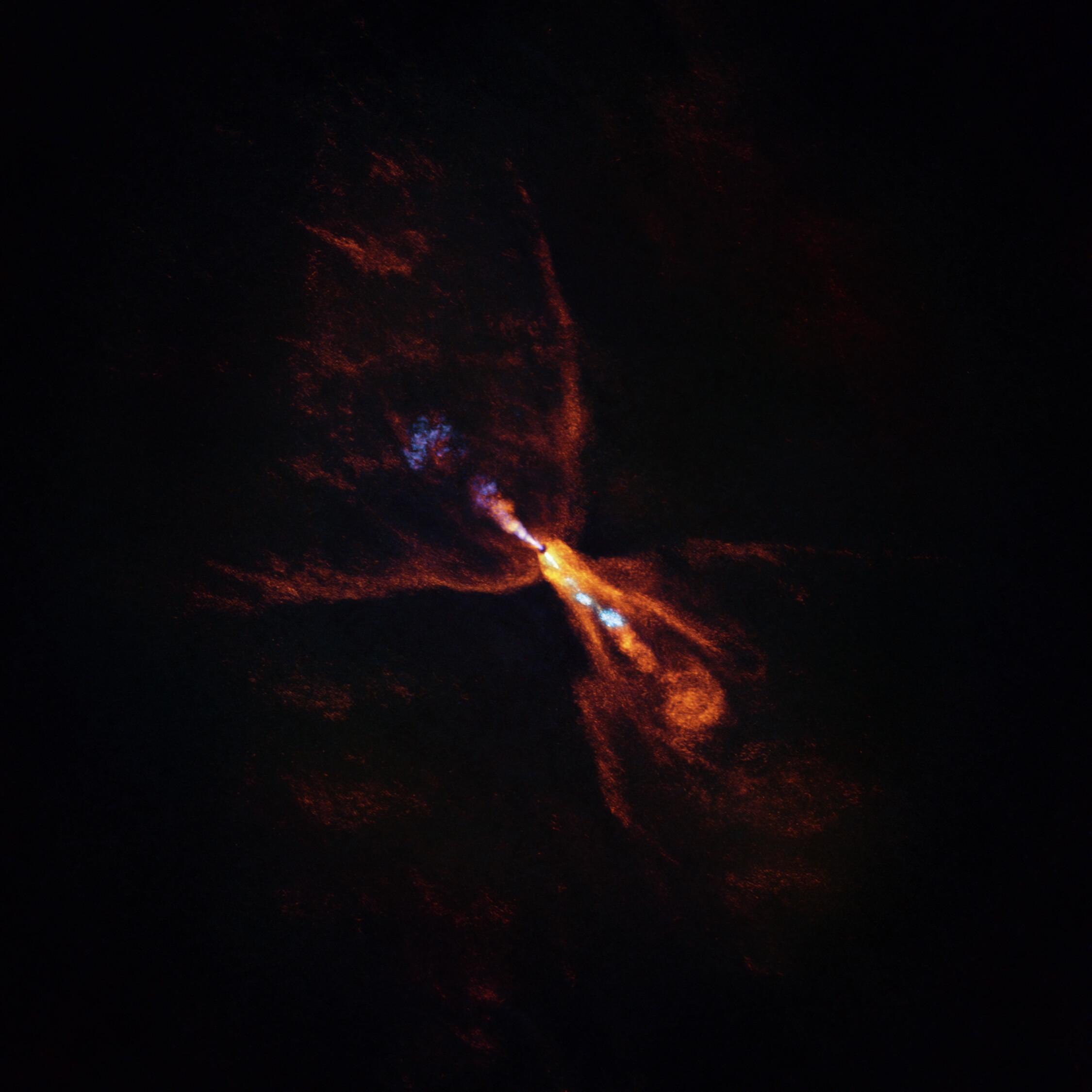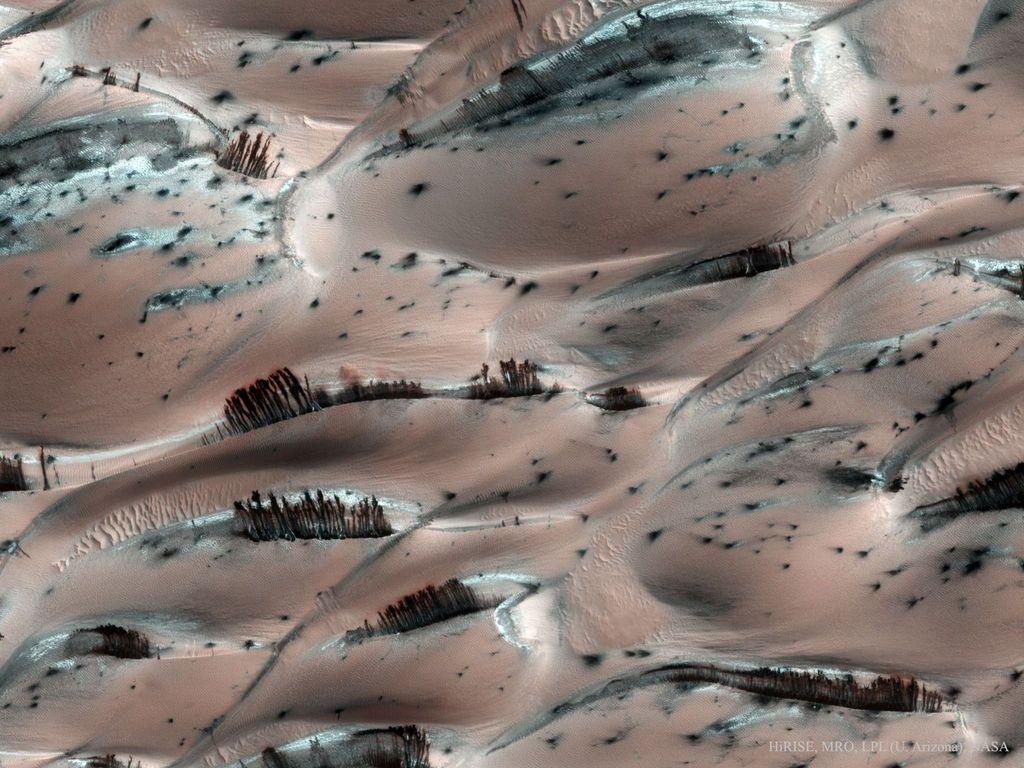#PPOD: This picture from the NASA/ESA/CSA James Webb Space Telescope features the gravitational lensing of the quasar known as RX J1131-1231, located roughly six billion light-years from Earth in the constellation Crater. It is considered one of the best lensed quasars discovered to date, as the foreground galaxy distorts the image of the background quasar into a bright arc, creating four images of the object. Credit: ESA/Webb, NASA & CSA, A. Nierenberg
ppod
#PPOD: The interaction of two doomed stars has created this spectacular ring adorned with bright clumps of gas – a diamond necklace of cosmic proportions. Fittingly known as the “Necklace Nebula,” this planetary nebula is located 15,000 light-years away from Earth in the small, dim constellation of Sagitta (the Arrow). Credit: ESA/Hubble & NASA, K. Noll
#PPOD: Jupiter’s south pole, as seen by NASA’s Juno spacecraft from an altitude of 52,000 kilometers. The oval features are cyclones, up to 1,000 kilometers in diameter. Multiple images taken with the JunoCam instrument on three separate orbits were combined to show all areas in daylight, enhanced color, and stereographic projection. Credit: NASA/JPL-Caltech/SwRI/MSSS/Betsy Asher Hall/Gervasio Robles
#PPOD: Two large, pale discs can be seen in today's PPOD: one of them in the Atacama Desert, the other orbiting the Earth 384,000 km away. The latter is our ever-present Moon, faintly hanging in the clear blue sky. Next to it is the real star of the image: one of the antennas of the Atacama Large Millimeter/submillimeter Array (ALMA). Credit: Y. Villalon/ESO
#PPOD: JWST's NIRCam captured this picture of the surface of Jupiter’s moon Europa. JWST identified carbon dioxide on the icy surface of Europa, which likely originated in the moon’s subsurface ocean. This discovery has important implications for the potential habitability of Europa’s ocean. The moon appears blue primarily because it is brighter at shorter infrared wavelengths. Credit: NASA, ESA, CSA, G. Villanueva (NASA/GSFC), S. Trumbo (Cornell Univ.), A. Pagan (STScI)
#PPOD: This Magellan full-resolution mosaic shows an area 160 kilometers by 250 kilometers in the Eistla region of Venus. The prominent circular features are volcanic domes, 65 kilometers in diameter, with broad, flat tops less than one kilometer in height. Sometimes called 'pancake' domes, they represent a unique category of volcanic extrusions on Venus formed from viscous (sticky) lava. Credit: NASA/JPL
#PPOD: Due to airglow, which is usually hard to see, the sky can glow like a giant rainbow. Disturbances like storms cause gravity waves, making airglow visible. The colors likely originate from various molecules: deep red from OH molecules at 87 km high, and orange and green from sodium and oxygen atoms higher up. This image was captured on Mount Pico in the Azores, Portugal, with Faial Island's lights in view. Credit: Miguel Claro | Dark Sky® Alqueva
#PPOD: This video, made from images taken by Parker Solar Probe’s WISPR instrument during its record-breaking flyby of the Sun on Dec. 25, 2024, shows the solar wind racing out from the Sun’s outer atmosphere, the corona. Credit: NASA/Johns Hopkins APL/Naval Research Lab
#PPOD: HOPS-315 is a baby star where astronomers have observed early planet formation. The image from the Atacama Large Millimeter/submillimeter Array (ALMA) and JWST data shows hot minerals starting to solidify.
In orange, we see the distribution of carbon monoxide, blowing away from the star in a butterfly-shaped wind. In blue, we see a narrow jet of silicon monoxide, also beaming away from the star.
Credit: ALMA(ESO/NAOJ/NRAO)/M. McClure et al.
#PPOD: Naturally erupting dust streaks on Mars create structures that look surprisingly like trees near the planet's north pole. These streaks are dark basaltic sand pushed to the surface of sand dunes by sun-heated solid carbon dioxide ice, or dry ice, sublimating directly into vapor. The sand dunes form a nearly complete ring around Mars' north pole and are covered by a thin layer of reddish Martian dust and patches of dry ice. Credit: NASA, HiRISE, MRO, LPL (U. Arizona)
